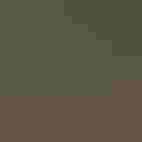Buff-breasted Sandpiper
At a Glance
A beautiful but strange little sandpiper, its short bill and round head giving it the look of a plover. On migration it typically stops on prairies, fields of short grass, and even dry plowed fields, seemingly odd settings for a shorebird. Formerly an abundant bird, the Buff-breasted Sandpiper suffered serious declines around the beginning of the 20th century, with many shot during their long migration from the Arctic tundra to the pampas of Argentina.
All bird guide text and rangemaps adapted from Lives of North American Birds by Kenn Kaufman© 1996, used by permission of Houghton Mifflin Harcourt Publishing Company. All rights reserved.
Category
Sandpiper-like Birds, Sandpipers
IUCN Status
Near Threatened
Habitat
Coasts and Shorelines, Fields, Meadows, and Grasslands, Saltwater Wetlands, Tundra and Boreal Habitats
Region
Alaska and The North, California, Eastern Canada, Florida, Great Lakes, Mid Atlantic, New England, Northwest, Plains, Rocky Mountains, Southeast, Texas, Western Canada
Behavior
Direct Flight, Erratic, Rapid Wingbeats, Running
Population
56.000
Range & Identification
Migration & Range Maps
Migration route through Great Plains is used by most birds in fall and almost all in spring. During fall, uncommon on Atlantic Coast, rare on Pacific Coast. Adults migrate south earlier in fall than juveniles, on average.
Description
8" (20 cm). Smooth pale buff on face and underparts, dark scaly back, yellow legs. Has dovelike or "gentle" expression, with dark eye on pale face, short bill, round head. Habitat is good clue.
Size
About the size of a Robin, About the size of a Sparrow
Color
Black, Tan, White, Yellow
Wing Shape
Long, Pointed, Tapered
Tail Shape
Rounded, Short, Square-tipped, Wedge-shaped
Songs and Calls
A low tik-tik-tik.
Call Pattern
Flat
Call Type
Buzz, Chirp/Chip, Trill
Habitat
Shortgrass prairies; in summer, tundra ridges. Migrants in North America mostly on dry open ground, such as prairies, pastures, airports, stubble fields, plowed fields. Sometimes on shores of lakes or ponds, or on coastal flats, but even there it tends to be on higher and drier sections. Breeds on tundra slopes and ridges with ponds or streams nearby.
Sign up for Audubon's newsletter to learn more about birds like the Buff-breasted Sandpiper
Behavior
Eggs
4, rarely 2 or 3. Whitish to buff or olive, with brown marks concentrated at larger end. Incubation by female only, 23-25 days.
Young
Downy young leave nest less than a day after hatching. Female tends young, but young feed themselves. Age at first flight about 16-20 days.
Feeding Behavior
Searches for food by sight, standing still and then making short run forward to capture prey, picking up insects and other items from surface of ground.
Diet
Mostly insects. Diet not well known, but probably mostly insects at all seasons. On breeding grounds, eats many flies (including crane flies and midges), also beetles and other insects. During migration, besides insects, also eats spiders and small crustaceans; sometimes eats seeds.
Nesting
Males gather on display grounds, or "leks," to attract females. These leks are spread out, each male defending an area of up to several acres; rarely more than 10 males present. Male displays by raising one wing, showing off white underside. If females approach, male spreads both wings wide, points bill up, shakes body. One male may mate with several females, and male takes no part in caring for the eggs or young. Nest site is on ground, usually near water, often on a hummock of moss. Nest (built by female) is shallow depression, lined with leaves, sedges, lichens, moss.
Conservation
Conservation Status
Formerly abundant, now very uncommon. Many were killed by market hunters in late 1800s and early 1900s. Much of habitat for migrating and wintering birds has been destroyed or degraded. Many migrants now forage in plowed farm fields; possible effects of agricultural chemicals on these birds are unknown.
Climate Threats Facing the Buff-breasted Sandpiper
Choose a temperature scenario below to see which threats will affect this species as warming increases. The same climate change-driven threats that put birds at risk will affect other wildlife and people, too.







